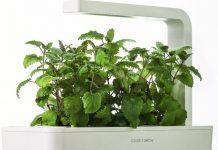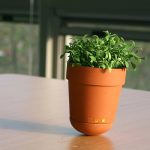The international kitchen has brought in the attention of more and more gardeners to the need to grow aromatic plants. Experiencing new challenges in combining flavors made it imperative for many home gardeners to learn the science of growing these wonderful herbs.
 Depending on the climate of the area where these herbs are growing, they can turn out to be more or less picky and difficult to adapt and grow.
Depending on the climate of the area where these herbs are growing, they can turn out to be more or less picky and difficult to adapt and grow.
Here are a few secrets you should treasure when daring to take on the challenge of growing your very own aromatic plant garden.
Dill, parsley and thyme are very sensitive immediately after germination. The bed they grow on needs to be weeded very often. After the plants grow out this difficult phase and get to the height of 5-10 cm you can relax. From this moment on, if the garden bed is free of weeds, they will grow faster and stronger.
There is something else you should know about dill. It is a sturdy plant once it is grown; so if you want to save yourself the trouble of reseeding it in spring, leave a few strains until late autumn. The seeds will fall on the ground and germinate in spring.
If your target is obtaining a rich crop of basil leaves, watch over the basil plants during summer and remove the flowers as soon as they appear. If the flower buds are removed in time, the plant will work on developing thicker and stronger scented leaves. This can hugely benefit a kitchen where Italian food is cooked daily.
Mint can be an extremely invasive species of aromatic plant. The underground reticular roots allow it to spread all over the garden. It grows fast and if you do not want it to take over the aromatic plants bed, it is better to plant it in a bottomless pot. This way the roots will not spread and you are safe from the invasion.
Sage is very sensible during germination. The process usually takes place when the temperature outside is very low and as the result the small plants are very feeble with very little chances of success. So far sage goes, it is better to consider replanting and transfer the plants on the garden bed when they are at least two weeks old.
Oregano and cilantro are the plants with more exotic aromas. Originated from warmer climates, they are the last to be seeded. These plants slightly more unpredictable but as long as they are warm and mildly watered, they grow beautifully.








